Cohesive Dendritic Painting
By Mike on Saturday, August 16, 2014, 22:03 - Permalink
 August 2014 - This is a spin-off from an interesting effect I noticed in another project where I pulled apart two glued boards and spotted that the glue had formed a branching, treelike pattern.
August 2014 - This is a spin-off from an interesting effect I noticed in another project where I pulled apart two glued boards and spotted that the glue had formed a branching, treelike pattern.
In this article, we'll put that effect into use to create decorative painted effects.
Video Tutorial
Here's a video demonstration of this technique (scroll further down the page for step by step instructions).
How It All Started

This idea began when I was making a metal sign - part of the construction involved gluing two pieces of plywood face to face - but, in a stroke of serendipity, the boards happened to spring apart (due to having a thin piece of metal folded back between them) - when I looked at the separated pieces, the glue had pulled into an amazing network of branched lines:
I mentally filed this away as the starting point for a future project - and here it is!
 I needed something flat, smooth and fairly strong to apply the paint to - so I bought a couple of cheap 'worktop saver' (i.e. 'knife destroyer') boards from a pound shop.
I needed something flat, smooth and fairly strong to apply the paint to - so I bought a couple of cheap 'worktop saver' (i.e. 'knife destroyer') boards from a pound shop.
These are smooth glass on top - a pebbled/textured surface just probably wouldn't work for this.
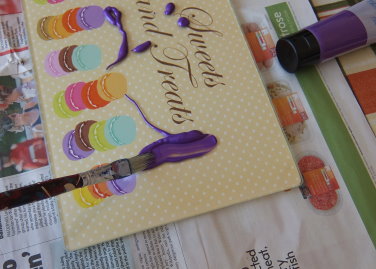 I was hoping that the patterned backing would just peel away from the glass, but it seemed to be very firmly stuck - which is a shame - I had been hoping to be able to see the patterns actually forming.
I was hoping that the patterned backing would just peel away from the glass, but it seemed to be very firmly stuck - which is a shame - I had been hoping to be able to see the patterns actually forming.
The boards are just a little smaller than a sheet of A4 paper. I applied about half a teaspoon of acrylic paint and spread it around with a brush
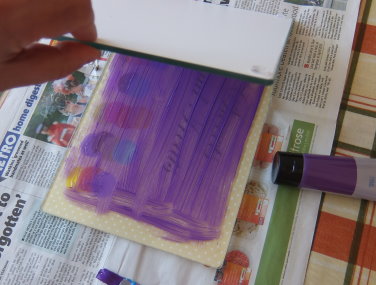 I placed the other sheet of glass flat on top, then pressed it down and slid it back and forth a little - to spread the paint as evenly as possible between the boards.
I placed the other sheet of glass flat on top, then pressed it down and slid it back and forth a little - to spread the paint as evenly as possible between the boards.
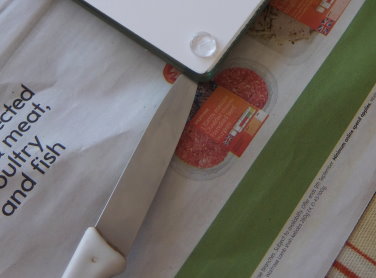 Using the point of a thin bladed knife, I very slowly and carefully pulled apart the two sheets of glass.
Using the point of a thin bladed knife, I very slowly and carefully pulled apart the two sheets of glass.
This needs to be done quite carefully because at this point, the two pieces are effectively glued together quite firmly - wedging them apart too quick could potentially just snap off the corner of the glass.
 Lifting apart the two panes in a single, smooth action revealed a first-time success!
Lifting apart the two panes in a single, smooth action revealed a first-time success!
The paint pulled together into a spidery network of lines and branches as the glass surfaces were separated.
 I carefully laid a sheet of card on top of the paint pattern and very gently pressed it down.
I carefully laid a sheet of card on top of the paint pattern and very gently pressed it down.
Care needs to be taken here not to smear or smudge the paint by excessive rubbing, but it is important to press down a little to ensure that the whole pattern is transferred to the paper.
 An approximately equal amount of paint adheres to both glass surfaces - so a print can be taken from both pieces.
An approximately equal amount of paint adheres to both glass surfaces - so a print can be taken from both pieces.
The result is (more or less) a pair of mirror image designs.
The effect is quite intricate and beautiful - It can be altered by adjusting the amount of paint and by its thickness - so there's scope for some more experimentation with this interesting craft.

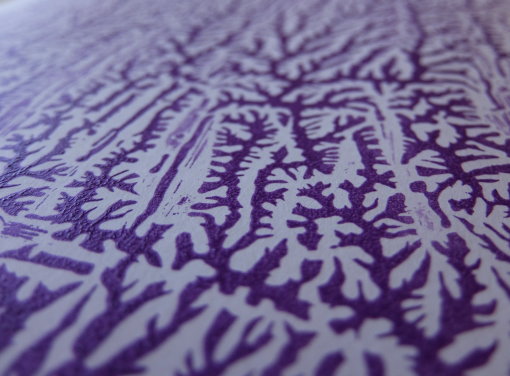
The resulting prints could be used for any purpose where patterned paper is needed - backgrounds, endpapers for books, card gift boxes, etc.
More than one colour of paint can be used - either blending it with a brush before pressing the glass together, or by gently sliding the glass when the paint is being pressed.
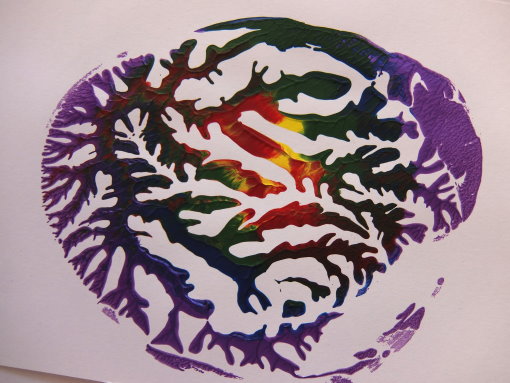
A thinner application of paint will tend to make a finer, more intricate pattern of lines.

Rotating the panes of glass against one another introduces swirling patterns that persist through the process - I've also noticed that traces of brush marks can sometimes be seen in the finished result (although modified by the dendritic patterning) - so there is also scope for introducing some sort of predictability into the final painted picture.

How Does It Work?
The effect that is chiefly at work here is cohesion - that is, the tendency for a substance to stick to things (including itself) - it's the same effect that makes raindrops round and keeps window stickers in place.
So the cohesive nature of the paint makes it want to stick to itself in blobs - and it also wants to stick to the glass.
But when the glass is pried apart, something has to give way - the volume of space between the two sheets, previously occupied by paint, is increasing - but the volume of paint there is finite, so air intrudes - the paint still wants to stick to itself though, so as the air creeps in, the paint creeps together.
The effect is largely random in detail, but consistent in a general sense, so in one way, it's completely unpredictable, but in at the same time, you know it's always going to be a branching, dendritic pattern.
Note
Before, during or after the video(s) embedded in this page, the player may display advertisements or links to additional videos - these are not affiliated to Atomic Shrimp and the selection is something over which I have no control.
